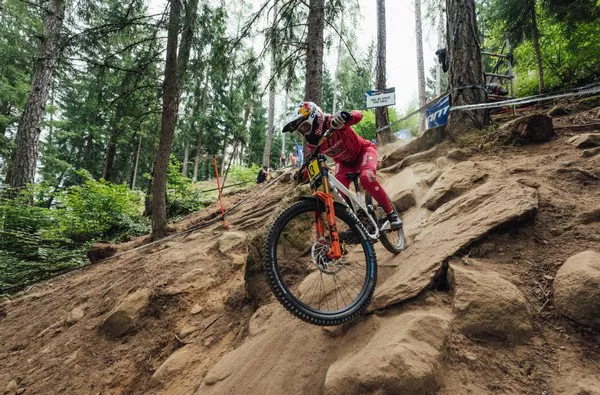In the realm of extreme sports, few activities offer the adrenaline rush and excitement quite like downhill mountain biking. It’s a sport that combines the raw beauty of nature with the technical prowess of cycling, creating an exhilarating experience for riders and spectators alike. As the name suggests, downhill mountain biking involves descending steep, rugged trails on specially designed bicycles. But beyond this basic description lies a world of skill, strategy, and sheer thrill.
The Essence of Downhill Mountain Biking
At its core, downhill mountain biking is about pushing the limits of both man and machine as riders navigate treacherous terrain at breakneck speeds. Unlike traditional cycling disciplines that focus on endurance or agility, downhill biking emphasizes speed and control, requiring riders to make split-second decisions as they barrel down rocky slopes and navigate tight corners.
The Equipment: More Than Just a Bike
One of the defining features of downhill mountain biking is the specialized equipment used by riders. Unlike standard bicycles, downhill bikes are built to withstand the rigors of rough terrain and high speeds. These bikes typically feature heavy-duty frames, long-travel suspension systems, and powerful disc brakes to provide stability and control on steep descents.
In addition to the bike itself, riders also wear a range of protective gear to minimize the risk of injury in the event of a crash. This may include full-face helmets, body armor, knee and elbow pads, and gloves. While this gear may seem cumbersome to the uninitiated, it’s essential for ensuring the safety of riders as they tackle challenging trails.
The Terrain: A Playground for Thrill-Seekers
One of the most exciting aspects of downhill mountain biking is the variety of terrain it encompasses. From rocky mountainsides to dense forests to man-made bike parks, downhill trails can be found in a wide range of environments, each offering its own set of challenges and rewards.
Natural downhill trails often feature steep gradients, technical rock gardens, and tight switchbacks, requiring riders to possess both physical strength and technical skill to navigate safely. On the other hand, bike parks and purpose-built downhill courses may include jumps, berms, and other features designed to test riders’ agility and precision.
The Skills: Mastering the Art of Descent
Successful downhill mountain biking requires a combination of physical fitness, technical skill, and mental fortitude. Riders must have the strength and endurance to withstand the physical demands of the sport, as well as the balance and coordination to maintain control of their bike at high speeds.
Technical skill is also crucial, as riders must be able to read the terrain ahead and choose the best line through obstacles such as rocks, roots, and drops. This often requires split-second decision-making and precise bike handling to avoid crashes and maintain momentum.
Mental toughness is perhaps the most underrated aspect of downhill mountain biking, as riders must be able to overcome fear and doubt in order to perform at their best. The ability to stay focused and maintain confidence in the face of challenging conditions can make all the difference between a successful run and a trip to the emergency room.
The Community: A Brotherhood of Adventurers
While downhill mountain biking is ultimately an individual pursuit, it’s also a highly social activity with a strong sense of community. Whether it’s sharing tips and tricks on how to tackle a tricky section of trail or cheering each other on at a race, downhill riders form tight-knit bonds with one another based on their shared love of the sport.
This sense of camaraderie extends beyond the trails as well, with many riders gathering for group rides, bike festivals, and other events throughout the year. For many downhill enthusiasts, the sense of belonging to a community of like-minded individuals is just as important as the thrill of the ride itself.
The Risks: Navigating the Fine Line Between Thrill and Danger
While downhill mountain biking offers an unparalleled adrenaline rush, it’s not without its risks. The combination of high speeds, challenging terrain, and technical obstacles means that crashes and injuries are an inherent part of the sport.
From minor scrapes and bruises to more serious injuries such as broken bones or concussions, downhill riders must be prepared to face the possibility of injury every time they hit the trail. However, many riders believe that the rewards of the sport outweigh the risks, and take precautions such as wearing protective gear and honing their skills to minimize the likelihood of accidents.
Conclusion
In the world of extreme sports, few activities offer the same level of excitement and challenge as downhill mountain biking. From the rush of speeding down a steep mountainside to the camaraderie of sharing the experience with fellow riders, downhill biking is a truly unique and exhilarating pursuit.
While it may not be suitable for everyone, for those who are willing to embrace the adventure, downhill mountain biking offers an opportunity to push the limits of what’s possible on two wheels and experience the raw beauty of nature in a whole new way. So grab your bike, don your helmet, and get ready to embark on the ride of a lifetime. The trails are waiting.

